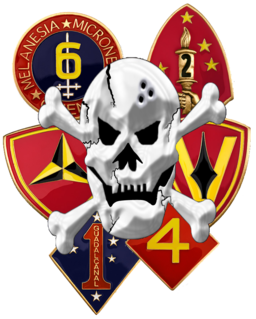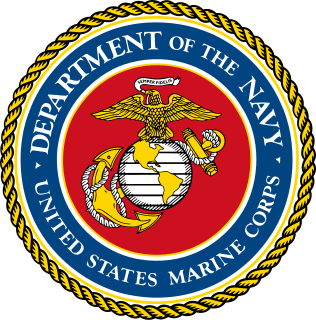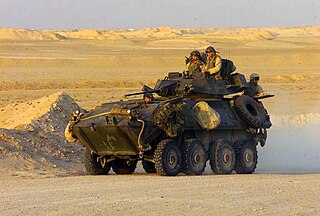The United States armed forces classify reconnaissance missions as "close" or "short-range"; "distant" or "medium-range"; and "deep" or "long-range".
Contents

The United States armed forces classify reconnaissance missions as "close" or "short-range"; "distant" or "medium-range"; and "deep" or "long-range".

Reconnaissance missions, within the scope of the battlespace, are characterized by the depth of penetration required, in terms of time, risk coordination, and support requirements. [1] Information is gathered by commanders at all echelons and is used to prevent surprise, permit the timely maneuver of ground forces, and to facilitate the prompt and effective use of supporting arms. [2]

Military commanders use forward platoon and company-sized elements of their own organic forces, to perform close reconnaissance ("short-range" reconnaissance), [2] such as: the recon/scout platoons in infantry battalions; reconnaissance platoons in armored regiments/battalions; or "intelligence, surveillance, target acquisition, reconnaissance" (ISTAR) companies that are organic to intelligence brigades/battalions.
These mission normally are conducted in the area between the forward positions to the rear, extending forward of the "Forward Edge of the Battle Area" (FEBA) to the "Fire Support Coordination Line" (FSCL). [3] This area is usually in the commander's Area of operation (AO). It is directed toward determining the location, composition, disposition, capabilities, and activities of enemy committed forces. Close reconnaissance covers the ground between the forward positions that are within the FEBA, [1] to the rear of the zone covered by 'distant' (or medium) reconnaissance assets.
The units that provide distant reconnaissance (or known as "medium" reconnaissance) capabilities are usually organic to, or attached to regimental/brigade, division (military)-level, corps-level commands. It is usually directed toward determining location, disposition, composition, movement of supporting arms (i.e. artillery emplacement), and the reserve elements of the enemy committed forces. [1] Distant reconnaissance is conducted between the FEBA, beyond the FSCL, [2] to the rear of the commander's area of influence. [3] Dedicated scouts serving with infantry, tank, artillery, engineer, or logistics units will generally position themselves about 5 kilometres (3.1 mi) in advance of the forward units where possible.
Modern-day commanders have units such as the U.S. Marine Corps Scout Sniper and Light Armored Reconnaissance units, or similar, at their disposal. Light armor such as Armored personnel carriers and light fast vehicles (similar to Sandrails) such as the Light Strike Vehicle are used with reconnaissance (scouting) units for much added armored protection, firepower, speed and mobility; to include, excellent communications, procurement of short- and long-range (remote) sensors, such as thermal imagery, ground surveillance radar and seismic sensors, [and if...] in range of the artillery fan, they have the much needed indirect fire support, when the need arises. In effect, these units are often replicate miniature combined-arms task forces (or battlegroups).
At the highest command level of a committed force or component (the division, corps, or field army-level), the force-level reconnaissance is employed to perform deep reconnaissance (or "long-range surveillance"), [2] which is conducted beyond the force (or component) commander's area of influence to the limits of the area of interest [3] (i.e. the geographical area from which information and intelligence are required to execute successful tactical operations, and to plan for future operations). [4] Deep reconnaissance is oriented toward determining the location, composition, disposition, and movement of enemy reinforcements, [1] combat support, and combat service support units, [2] in order to shape and describe the battlespace.
While almost every front-line military unit is sometimes assigned to do limited patrolling, or surveillance, of one kind or another, this kind of stealthy scouting—far from friendly forward operating bases—is a particularly dangerous mission. Scouting specialist, or reconnaissance operators, may protrude as far as 25–50 kilometres (16–31 mi) forward of the FSCL. In practice, reconnaissance or scouting platoons, typically of 20–40 men (4–6 men per squad/team), can probe beyond the FEBA, [4] usually in means of 190–320 kilometres (120–200 mi) from any friendly ground forces, however, this extreme distance excludes any advantages of operating under the supporting arms fan; such as naval gunfire or artillery support, but are not limited to close air support.
In the United States Army, some brigades and divisions have separated, and structured into Long-Range Surveillance (LRS) units, which can go deeper beyond the front line; in which, the units are reorganizes into a Brigade combat team model with enhanced reconnaissance. [5] As of 2007, however, scout specialists were being removed from some brigades, such as the Stryker Brigade.[ citation needed ]

A battalion is a military unit. The use of the term "battalion" varies by nationality and branch of service. Typically a battalion consists of 300 to 800 soldiers and is divided into a number of companies. A battalion is typically commanded by a lieutenant colonel. In some countries, the word "battalion" is associated with the infantry.

In military operations, reconnaissance or scouting is the exploration outside an area occupied by friendly forces to gain information about natural features and other activities in the area.

Marine expeditionary units are the smallest air-ground task forces (MAGTF) in the United States Fleet Marine Force. Each MEU is an expeditionary quick reaction force, deployed and ready for immediate response to any crisis, whether it be natural disaster or combat missions. Marine amphibious unit (MAU) was the name used until the late 1980s.

Force Reconnaissance (FORECON) is one of the United States Marine Corps' special operations capable forces (SOC), and provides essential elements of military intelligence to the command element of the Marine Air-Ground Task Force (MAGTF), by supporting their task force commanders, and their subordinate operating units of the Fleet Marine Force (FMF).

ISTAR stands for intelligence, surveillance, target acquisition, and reconnaissance. In its macroscopic sense, ISTAR is a practice that links several battlefield functions together to assist a combat force in employing its sensors and managing the information they gather.

A long-range reconnaissance patrol, or LRRP, is a small, well-armed reconnaissance team that patrols deep in enemy-held territory.

The United States Marine Corps Reconnaissance Battalions are the Special Operations Capable reconnaissance assets of Marine Air-Ground Task Force that provide division-level ground and amphibious reconnaissance to the Ground Combat Element within the United States Marine Corps. Division reconnaissance teams are employed to observe and report on enemy activity and other information of military significance in close operations. The Military Occupational Specialty code for Reconnaissance Marine is 0321.

2nd Light Armored Reconnaissance Battalion is a fast and mobilized armored terrestrial reconnaissance battalion of the United States Marine Corps. Their primary weapon system is the 8-wheeled LAV-25 and they fall under the command of the 2nd Marine Division and II Marine Expeditionary Force. The unit is based out of the Marine Corps Base Camp Lejeune, North Carolina. The current mission statement of the battalion is: To perform combined arms reconnaissance and security missions in support of the Ground Combat Element (GCE) of a Marine Air-Ground Task Force (MAGTF). Its mission is to conduct reconnaissance, security and economy of force operations, and, within its capabilities, limited offensive or defensive operations that exploit the unit's mobility and firepower.
Reconnaissance, surveillance, and target acquisition (RSTA) refers to a joint doctrine of reconnaissance, surveillance and target acquisition conducted by the United States Armed Forces. RSTA operations are designed to support military operations at a strategic, operational, or tactical level, either by dedicated RSTA forces or those which possess the capability.
Marine Air-Ground Task Force is a term used by the United States Marine Corps to describe the principal organization for all missions across the range of military operations. MAGTFs are a balanced air-ground, combined arms task organization of Marine Corps forces under a single commander that is structured to accomplish a specific mission. The MAGTF was formalized by the publishing of Marine Corps Order 3120.3 in December 1963 "The Marine Corps in the National Defense, MCDP 1-0". It stated:

The United States Marine Corps is organized within the Department of the Navy, which is led by the Secretary of the Navy (SECNAV). The most senior Marine commissioned officer is the Commandant of the Marine Corps, responsible for organizing, recruiting, training, and equipping the Marine Corps so that it is ready for operation under the command of the unified combatant commanders. The Marine Corps is organized into four principal subdivisions: Headquarters Marine Corps, the Operating Forces, the Supporting Establishment, and the Marine Forces Reserve.
In the United States Marine Corps, the ground combat element (GCE) is the land force of a Marine Air-Ground Task Force (MAGTF). It provides power projection and force for the MAGTF.

Special reconnaissance (SR) is conducted by small units of highly trained military personnel, usually from special forces units or military intelligence organizations, who operate behind enemy lines, avoiding direct combat and detection by the enemy. As a role, SR is distinct from commando operations, but both are often carried out by the same units. The SR role frequently includes covert direction of air and missile attacks, in areas deep behind enemy lines, placement of remotely monitored sensors and preparations for other special forces. Like other special forces, SR units may also carry out direct action and unconventional warfare, including guerrilla operations.

Armoured reconnaissance is the combination of terrestrial reconnaissance with armoured warfare by soldiers using tanks and wheeled or tracked armoured reconnaissance vehicles. While the mission of reconnaissance is to gather intelligence about the enemy with the use of reconnaissance vehicles, armoured reconnaissance adds the ability to fight for information, and to have an effect on and to shape the enemy through the performance of traditional armoured tasks.

The United States Marine Corps Light Armored Reconnaissance Battalions, or LAR Battalions, are fast and mobilized armored terrestrial reconnaissance units that conduct reconnaissance-in-force (RIF) ahead of the battalion landing teams or division infantry forces. They mainly provide the Marine Air-Ground Task Force and the Marine Expeditionary Unit commanders vital intelligence of the enemy.
The United States Marine Corps is assigned by the National Command Authority to be primarily the Department of Defense's expeditionary force-in-readiness, and the Department of the Navy's contingent landing force—amphibious by nature. Before 2006, the Marine Corps was the only branch of the Armed Forces that did not have any of its special warfare elements participating in the United States Special Operations Command (USSOCOM), due to confining its special operations capabilities only for the purpose to the Fleet Marine Force.
The reconnaissance mission within the United States Marine Corps is divided into two distinct but complementary aspects; Marine Division Recon and Force Reconnaissance.